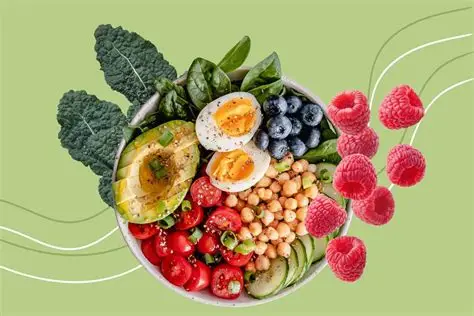A plant-based diet doesn’t mean missing out on protein. With the right food choices, you can fuel your body and thrive without meat.
Introduction
Getting enough protein is one of the most frequent worries individuals have when switching to a plant-based diet.
Protein is an essential ingredient that helps the body’s immune system, hormone synthesis, muscular growth, and general repair activities.
Many people believe that cutting off meat causes deficits because it is generally regarded as the richest source of protein.
But if you know where to look, you may find plenty of protein in plants. You can meet your daily demands and keep your body strong and healthy without depending on animal products if you take a varied and well-balanced approach.
Understanding Plant-Based Protein
Nine of the amino acids that make up proteins are essential since the body is unable to manufacture them on its own.
Although all nine required amino acids are found in animal products, which are referred to as “complete” proteins, plant foods can also provide them when consumed in combination.
For instance, grains and beans create a full protein profile; grains have a high lysine content but a low methionine content.
Your body will obtain what it needs without depending on meat if you consume a range of grains, legumes, nuts, and seeds throughout the day.
Legumes: The Foundation of Plant Protein
Legumes are the cornerstone of plant-based protein. A cup of cooked lentils provides around 18 grams of protein, along with iron, magnesium, and soluble fiber that supports heart health.
Chickpeas and black beans are equally versatile, perfect for soups, stews, salads, or hummus spreads.
Beyond their protein content, legumes are filling and nutrient-dense, making them an excellent alternative to meat in everyday meals.
Soy and Its Many Forms
Soybeans are unique among plants because they contain all essential amino acids, making them a complete protein source.
Tofu and tempeh are especially popular because of their versatility in recipes, absorbing flavors and textures that mimic meat in stir-fries, curries, and sandwiches.
Edamame, or young soybeans, are a protein-packed snack with about 17 grams per cup. Research also shows soy supports heart health by lowering cholesterol, making it a double win for those embracing plant-based eating.
Whole Grains: More Than Just Carbs
Whole grains often get overlooked as protein sources, but they are an important part of the plant-based protein puzzle.
Quinoa, for example, contains all nine essential amino acids and offers about 8 grams of protein per cooked cup.
Brown rice, oats, barley, and millet may provide slightly less, but when paired with legumes or seeds, they form complete proteins. Incorporating whole grains not only boosts protein but also supplies fiber, B vitamins, and slow-release energy.
Nuts and Seeds: Small but Mighty
Nuts and seeds pack a concentrated punch of protein along with heart-healthy fats and essential micronutrients.
Two tablespoons of peanut butter offer about 8 grams of protein, while chia seeds and hemp seeds provide not only protein but also omega-3 fatty acids.
Pumpkin seeds, sunflower seeds, and almonds are excellent for snacks, toppings, or blending into smoothies. While calorie-dense, their nutrient richness makes them valuable additions to a plant-based diet.
Vegetables That Surprise You with Protein
While vegetables aren’t the first foods that come to mind when thinking of protein, certain ones can contribute significantly to daily intake.
Spinach, broccoli, Brussels sprouts, and kale provide 4–5 grams of protein per cooked cup, along with iron, calcium, and antioxidants.
Alone they may not provide enough, but combined with legumes, grains, or seeds, they help round out a high-protein, nutrient-rich meal.
Plant-Based Protein Powders: A Convenient Boost
For those with higher protein needs, such as athletes or people on the go, plant-based protein powders can be a helpful option.
Made from peas, hemp, rice, or soy, these powders provide 15–25 grams of protein per serving. They’re ideal for smoothies, oatmeal, or post-workout shakes.
While whole foods should remain the foundation of your diet, protein powders offer convenience and ensure that you consistently meet daily requirements.
Final Thoughts
Getting enough protein on a plant-based diet is not only possible but also rewarding for your overall health. By incorporating a wide variety of legumes, soy products, whole grains, nuts, seeds, and even vegetables, you can meet your protein needs without meat.
The key lies in diversity combining different foods throughout the day ensures your body receives all essential amino acids. With thoughtful planning, plant-based eating supports strong muscles, a healthy heart, and long-lasting energy while aligning with ethical and environmental choices.


